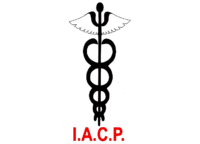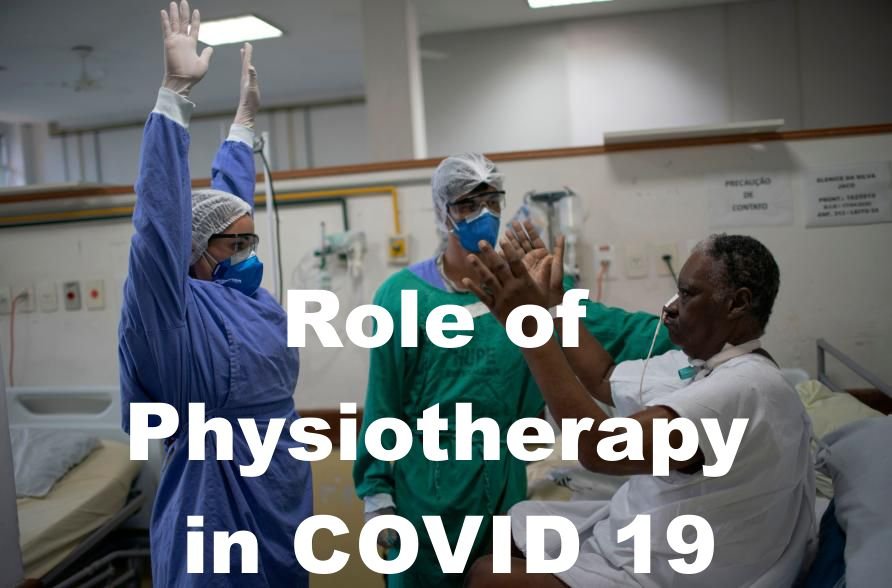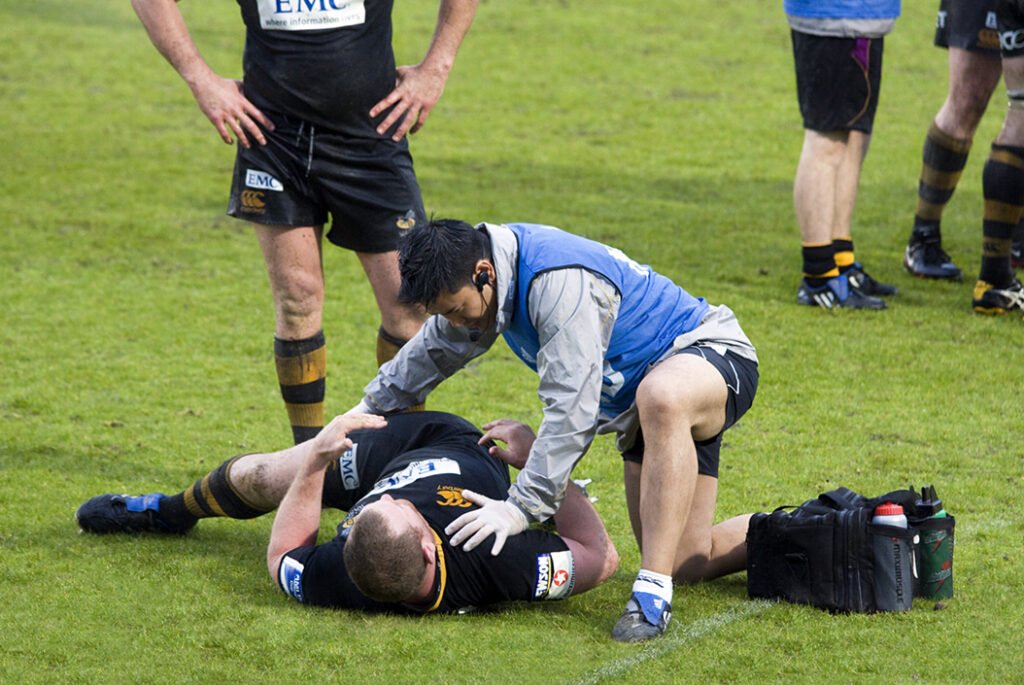Introduction
Physiotherapists are medical specialties who treat diseases, injury, and deformity through physical methods such as massage, heat treatment and exercises. They are rarely involved in drug prescription and surgical operation. Earlier in the year 2019, the world faced the COVID 19 pandemic, which was declared the sixth public health emergency of international concern.
It’s said to be caused by a severe acute respiratory syndrome (SARS). The mode of spread is via respiratory droplets, either via coughing, sneezing, or via direct contact with an exposed person. COVID 19 mainly presents with fever, dyspnea, cough, headache, sputum production, sore throat, rhinorrhea, and diarrhea. No particular treatment has been identified for the new COVID 19 except supportive care, including oxygen therapy and organ support.
Crucial role of physiotherapists
The management of either suspected or newly diagnosed COVID 19 patients requires correlation between the different medical staff, among them being physiotherapists. Who plays a fundamental role in the respiratory management and rehabilitation of these patients, starting from the critical care unit to the ward until the patient is fully recovered and ready to be discharged.
Physiotherapist mainly focuses on preventing long-term complications after a COVID 19 infection and assisting patients in returning to their expected physical and cognitive activities. The physiotherapist is often the first person who comes into contact with the patients.
Thus they are often in the position of early identification of infectious diseases. These stress the importance of the physiotherapist being familiar with COVID 19 and recognizing early signs and symptoms.
The physiotherapist’s role differs according to settings; it revolves between primary care, community care, and hospital care. At the primary care level, such as in private clinics, they emphasize the triage and identification of cases to prevent transmission.
Moreover, at the community level, they play an essential role in educating the patients and their caregivers on preventing community-based transmission. Their most role will entail managing respiratory conditions such as difficulty in breathing on the hospital level.
Physiotherapist in the ICU
On admission, most of the patients will present with severe dyspnea, and thus, they are admitted to the compressive care unit. However, the percentage is usually lower compared to the patient presenting with mild to moderate symptoms. The role of the physiotherapy is giving them breathing exercises and positioning them well to help their lungs function better.
A tube is inserted via the mouth to allow enough oxygen supply to the body; the patient may stay for several days to weeks in the bed and thus may appear to have lost their cognitive abilities and muscle weakness. Early rehabilitation and mobilization assist the patient is being discharged from the hospital. The physiotherapist in the intensive care unit is patient assessment, setting of goals, and prescription of mobility and rehabilitation.
There are four primary methods of physiotherapy carried out by many countries. These include:
Physical rehabilitation
Following a prolonged bed rest and isolation, the patient physical rehabilitation to help resume their normal function. The therapy is usually gradual, from an hour to a few days a week, to prevent exhausting the patients. During this procedure, the physiotherapy must have worn personal protective equipment and the patient wearing a surgical mask.
A 2020 review stated that the main aim of physical therapy is to
- Bring back the function of the muscles
- Enable people to back to their everyday lives
- Minimize the risk of suffering from mental health conditions due to more extended periods of immobility
Patients at the critical care unit require step-by-step therapy, ranging from helping one change their body position to performing passive joints movement of joints such as stretching the finger. They also play a critical role in turning the patient who is sedated to improve pulmonary circulation.
After a patient is transferred to the ward, the physiotherapist will assist the patient in sitting at the edge of the bed and supporting them until they can stand and take a few steps. There is then followed by physical exercises, which help strengthen the respiratory functions.
Physical therapy does not end after discharge, and they are some follow-up strategies taken to monitor how the patient is coping. Patients can perform exercises such as walking up and downstairs and participating in non-strenuous body fitness exercises such as jogging and squatting.
After an exercise, the newly recovered patient may report increased and alleviated symptoms called post exertional malaise. Patients should be advised to take rest if the symptoms persist.
Cognitive rehabilitation
Research done in 2020 has shown that coronavirus affects the nervous system and the brain. The patients are present with the symptoms such as memory problems, especially those in the intensive care unit, for an extended period. They can also give dramatic mood changes, loss of smell and taste, and trouble concentrating.
Most of these patients will require cognitive therapy before they are discharged. These help them Strengthen their cognitive abilities and also return to their standard thinking patterns and behaviors. The physiotherapist is concerned about performing a fundamental role here by performing mental exercises, offering memory training, speech training, and offering psychological support to confused and disoriented patients.
Offering mental health support
Being stressed and anxious is usually expected because of our daily life entanglements. Every day, we are faced with obstacles that we need to fight. Recovery from COVID 19 may cause the patient psychological trauma, usually due to a lot of stress.
Once a patient undergoes depression and anxiety, they may not remember most of his past events clearly. These can also lead to anxiety disorders such as post-traumatic stress disorder, where the patient experience horrible nightmares, flashbacks, and progressive replaying of painful memories. These conditions most often affect patients who have been admitted to the intensive care unit.
The national institute of mental health stated that most people with chronic medical illnesses such as hypertension and diabetes are likely to suffer depression. The better news is the available treatment for people with post-traumatic stress disorders or depression as there are many support groups for COVID 19 survivors and face-to-face therapy.
However, physiotherapists are asked to update their skills daily about the current COVID 19 guidelines through the world health organization. These enable them to take quality care of the patients. These also will allow them to share the information with the staff and their patients. They are asked to emphasize handwashing criteria as we all know that handwashing techniques assist in approximately 90 percent of the prevention of coronavirus.
Currently, there are no optimal guidelines for rehabilitating a patient after being discharged from the hospital. Thus, it is difficult to support the patients beyond their hospital stay. Although the medical practitioners can be on the run to assist the patients, the patients and the non-infected must observe the preventive measures to prevent re-infection. They are several preventative measures that the world health organization has approved. They include:
- Often washing hands with soap and water or an alcohol-based sanitizer
- Social distancing with anyone who is sneezing or coughing
- Wearing masks if you cannot observe social distancing.
- Refraining from touching your eyes, ears, and mouth
- Cough or sneeze on your bent elbow or use a disposable tissue
- Stay at home in case you are feeling unwell
Conclusion
With millions of people being confirmed to have COVID 19, the world is in a state of agony as no one knows the future of the coronavirus. Research has shown that many people put in a breathing machine there are at an increased risk of suffering long-term problems; this is called post-intensive care syndrome, which could last for months or years.
Many countries have created awareness of COVID 19 infections with their presenting symptoms through online advertisements, education training, and billboards. Thus it is essential that if you experience fever, cough, and sneezing to seek medical attention, this will not only protect you but even your family members.
References
[1] Physiopedia
https://www.physio-pedia.com/Role_of_the_Physiotherapist_in_COVID-19
[2] MedicalNewsToday
https://www.medicalnewstoday.com/articles/covid-19-rehabilitation#physical
[3] ncbi



